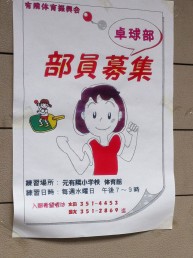The first day I showed up at a Doshisha Track Club practice was a nerve-wracking one; I hadn’t emailed anyone prior and took the 60 minute journey to Kyotanabe myself. I had gone over in my head exactly what I would say (it was early in the semester, my Japanese was still no good), making sure to throw in the –nkedo at the end to come off as not too forward. When I finally arrived I just stood at the side of the track, had a mini panic attack, and decided to cash in on the I’m-a-nervous-foreigner card. Hard. A girl approached me as I stood drawing circles in the dirt with my foot and, in well-articulated English, asked me what I was doing there. This is your moment! I thought, and managed to stutter out the lines I had rehearsed so thoroughly. After that things were a blur, and even today I am still surprised at how easily I was accepted as a semi-regular member of the Doshisha track practices. Even on that first day I was asked if I wanted to participate in the meets, full uniform and everything. I was taken aback, but unfortunately, due to being in Kyoto for only a semester, the logistics of it would have been too difficult, and I was relegated to a practice-only “member.” And so began my CIP journey.
I’m not exactly sure I can say I learned a lot through my CIP. Some other students throw themselves into completely new and foreign experiences, but I chose to go with something more familiar. Being already well-versed in the activity itself, I had the chance to focus on the differences between American and Japanese sports. It was a bit difficult to practice my Japanese at first, as many of the students liked to practice their English with me, and asked a lot about America. I consented and spent the first few sessions speaking a good deal of English before the shininess of the new American runner wore off. After that, I was able to pick up on a lot of the unique things about the team.
Being somewhat versed in Japanese culture, I expected a good deal of the experiences I eventually underwent. I knew there was going to be clear hierarchy within the team, honorific language and the like, and I knew there was going to be a certain intensity that contrasted to the often lukewarm commitment of American athletes. All of this was true, but I was surprised by the degree to which these things revealed themselves. I remember one day when I was doing a hill workout with Nakaoka (essentially my assigned training partner, at least in the first few practices) and a few other underclassmen that this hierarchy revealed itself. I should note that Nakaoka and I are juniors, while the others seems to be freshmen and sophomores. After the first rep, which we all did together, I was approached by some of the other members with a water bottle and a towel. At first I was confused and said that they didn’t belong to me, sorry, wrong person, but they continued to insist. I then realized that they were the team’s towel and water bottle, and they were giving them to me because I was an older person on the team. This kind of behavior would never fly in America, due to ideals of equality and a fear of elitism. After the workout, those same athletes collected the towels and water bottles in a bucket and took them back to put them away.
This was easily the most surprising experience of my time with the team. Many other differences eventually revealed themselves, though mostly in terms of training philosophy and preparation. My time with the track team at Doshisha was a fun one, and it certainly made very real the things I had only learned about. Thanks to the team, I realized my dream of becoming the person with the strongest body at KCJS this semester.

